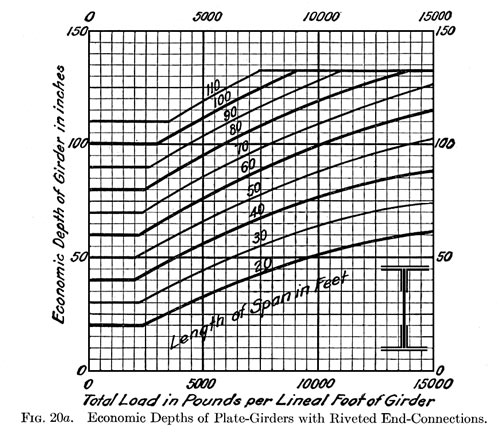| 180 | ECONOMICS OF BRIDGEWORK | Chapter XX |
|
changes sectional areas of chords only one-half as often as do the others, which feature tends to save metal in splice plates and expense in field riveting. The length of span at which it pays to change from parallel chords to curved or, more properly speaking, polygonal chords, will vary with the class of bridge; but it is seldom advisable to adopt the latter for spans under two hundred feet. The greater the panel length the greater the limit of span for parallel chords, consequently it will generally be found shorter for highway bridges than for railway bridges. This curving of the top chords of long through-spans has sometimes been carried to such excess
as to approach very closely the old parabolic trusses, in which the curve extends from end-pin to end-pin. In a large and important bridge over the Mississippi River the top chords of the main spans, which exceed five hundred feet in length, are so curved as to involve the use of a very shallow portal, allowing but the ordinary clear headway beneath. Such excessive curvature causes the top chord to do most of the work of the web and makes the latter too light and vibratory. It also necessitates the use of counters or stiff main diagonals almost up to the ends of the span. A proper curvature of the chords is not only economical of both metal and money, but also is aesthetic, adding greatly to the appearance of most bridges, consequently this feature should be encouraged, but not, of course, to excess. The best curvature of chords for any span can only be determined by experience, |
